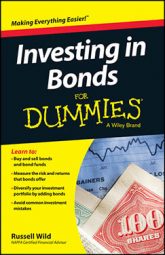What makes work-for-pay optional (other than being born rich, resorting to crime, or marrying a heart surgeon) is a freedom portfolio — a portfolio big enough to produce the income needed to support your lifestyle.
When is a portfolio big enough that employment becomes optional? When it provides enough cash flow to pay the bills: both today's and tomorrow's. The tough part about retirement planning is that you don't know how many tomorrows you're going to have; estimating bills that are years off is tough; and certain ongoing expenses, such as medical bills, may be well beyond your control. In addition, Congress keeps toying with tax rates, so you can't even estimate your future IRS bills.
And on top of all that, even though a predictable cash flow for you could be arranged, total predictability, with today's pathetic yields on ultra-conservative investments, comes at a heavy price.
Estimating your target portfolio
Remember the 20 times rule: You figure out how much money you need to live on for a year (being realistic — look at your bills) and multiply that number by 20. That is the very minimum most financial professionals would want to see you have in your portfolio before you permanently quit your day job. (This assumes that you don't have a good, old-fashioned pension.)
Anything less, and you can't have any reasonable assurance that you aren't going to be living off baked beans and homegrown parsley someday. But this rough rule doesn't factor in the price of beans, how many beans you can eat, or any number of other variables over the coming decades.
To do a much better estimation and get a firmer idea of what kind of portfolio you should shoot for, you may want to hire a financial planner with fancy software to create a retirement plan for you. Or you can turn to any number of websites, some of which do a fair (but not great) job at estimating what size portfolio you'll need. Try the FiRECalc website; click on the Advanced FIREcalc tab, and take it from there. Just about all brokerage house and financial supermarket websites have calculators, as well.
Although they're better than any rough rule, the problem with all retirement plans — yes, even the fancy ones done by professionals — is that they're static. Over the course of your life, things change: interest rates, the inflation rate, your portfolio returns, your spending, your health, and those stupid sunset provisions on certain taxes — to name just a few.
That said, for the moment accept the 20x rule (as splintery rough as it is) and move on to the question: Where will your cash actually come from after you are no longer getting a paycheck?
Cash flow, dear reader, is the name of the game. Cash — pure, steady cash — is what you need to quit your paid employment, if that is your goal.
After all, you may have $5 million in net worth, but if that $5 million is in the form of a framed Picasso or a hilltop house with an Olympic-sized pool in the yard, though you're technically a multimillionaire you may not have enough in your wallet to buy yourself lunch at Taco Bell.
Lining up your bucks
The gods of retirement offer you a number of options for putting cash in your wallet. If you're one of those lucky Americans who can still bank on a solid fixed pension with health benefits, that's great. Social Security, when you're gray enough, can also provide steady cash . . . although at the time of this writing, it seems that Social Security may need to start slashing benefits (not all, but some) within the next two decades or so.
Most people who are not retired senators will need this money in order to retire, and it can come from one or all of three sources: interest, dividends, and the sale of securities. Your choice among these options (or some combination of the three) will have a great bearing on how big your portfolio needs to be and how much you can safely withdraw.
The best option — always — is to adopt a cash withdrawal plan from your portfolio that is flexible and potentially allows for all three sources of cash flow to play into your new paycheckless life. One of the biggest and most common investment mistakes that people make is to lock their sights on one form of cash flow (typically interest income) and ignore the others.

